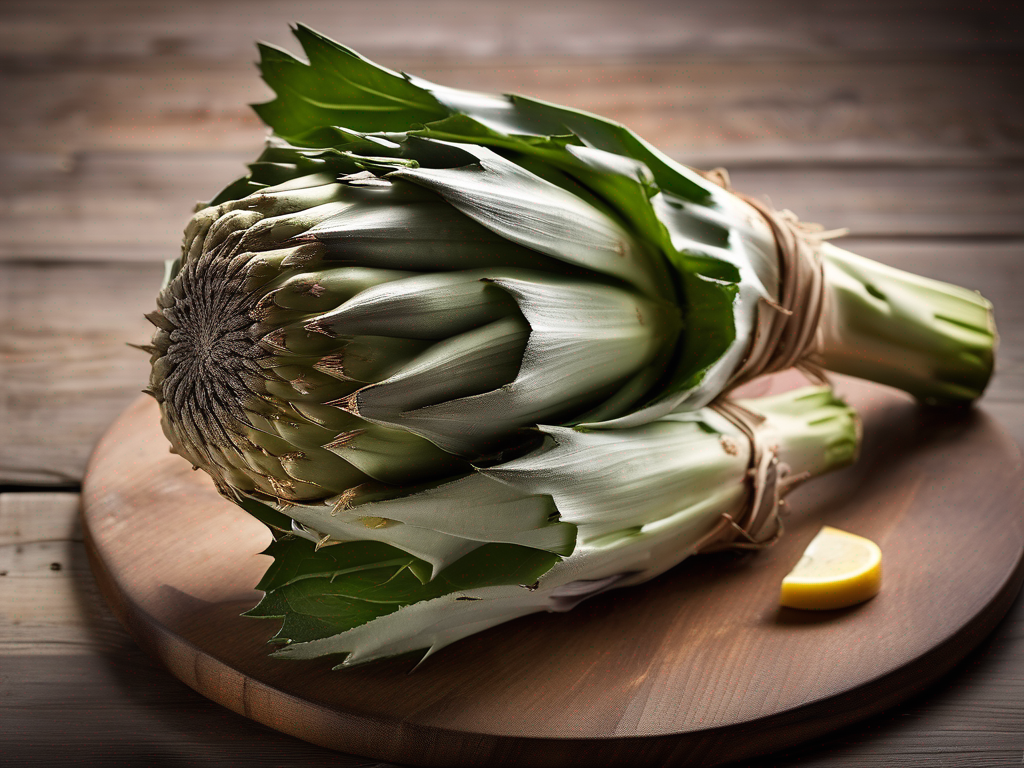
Is Your Cardoon Still Safe to Eat? How to Tell If It Has Gone Bad
Get Your Free Food Safety Cheat Sheet
30 most common foods with instant answers. Print it and stick it on your fridge—completely free!
Is Your Cardoon Still Safe to Eat? How to Tell If It Has Gone Bad
Cardoon, a close relative of the artichoke, is a unique and flavorful vegetable that can be a delightful addition to your culinary repertoire. However, like all fresh produce, cardoon can spoil if not stored properly. In this guide, we will explore how to determine if your cardoon has gone bad and provide you with tips on how to maintain its freshness. (Cardoon)
Understanding Cardoon
Before we delve into how to identify spoilage in cardoon, let's first understand what this vegetable is all about. Cardoon is a thistle-like plant with a mild, slightly bitter flavor. It is commonly used in Mediterranean cuisine and can be prepared in various ways, such as braising, roasting, or adding to soups and stews.
Signs Your Cardoon Has Gone Bad
Visual Cues
One of the most straightforward ways to determine if your cardoon has spoiled is by inspecting its appearance. Here are some visual cues to look out for:
- Discoloration: If you notice any dark spots, mold, or a slimy film on the surface of the cardoon, it is a clear indication that it has spoiled.
- Wilting: Fresh cardoon should have crisp, firm stalks. If the stalks appear limp or shriveled, the vegetable is past its prime.
Smell Test
Another reliable method to assess the freshness of your cardoon is by using your sense of smell. Spoiled cardoon will often emit unpleasant odors, indicating bacterial growth or decay. If you detect a sour, musty, or off-putting smell when you sniff the vegetable, it is best to discard it.
Texture Check
The texture of cardoon can also provide valuable insights into its condition:
- Sliminess: Touch the surface of the cardoon stalks. If they feel slimy or excessively moist, it is a sign of spoilage.
- Mushiness: Press gently on the stalks. If they feel mushy or soft, the cardoon has likely deteriorated.
Proper Storage Practices
To prolong the shelf life of your cardoon and prevent premature spoilage, follow these storage tips:
-
Refrigeration: Store fresh, unwashed cardoon in the vegetable crisper drawer of your refrigerator. Place the stalks in a perforated plastic bag to maintain humidity levels.
-
Moisture Control: Avoid washing the cardoon until you are ready to use it. Excess moisture can promote the growth of mold and bacteria.
-
Trimming: Before storing cardoon, trim off any wilted or discolored parts. This will help preserve the freshness of the remaining stalks.
-
Use Quickly: Cardoon is best enjoyed when fresh. Try to use it within a few days of purchase to ensure optimal flavor and quality.
Safety Precautions
When handling and preparing cardoon, it is essential to observe proper food safety practices to reduce the risk of foodborne illness:
-
Wash Thoroughly: Before cooking, rinse the cardoon under running water to remove any dirt or debris.
-
Cooking Temperature: Ensure that the cardoon is cooked to the recommended temperature to kill any harmful bacteria that may be present.
-
Cross-Contamination: Prevent cross-contamination by keeping raw cardoon separate from ready-to-eat foods and using clean utensils and cutting boards.
-
Storage Temperature: Maintain the refrigerator temperature at 40°F (4°C) or below to inhibit bacterial growth and preserve the freshness of the cardoon.
Conclusion
In conclusion, keeping your cardoon fresh and safe to eat involves proper storage, regular inspection for signs of spoilage, and adherence to food safety guidelines. By following the tips outlined in this guide, you can enjoy the unique flavors of cardoon in your favorite dishes while minimizing the risk of consuming spoiled produce. Remember, when in doubt, it's always better to err on the side of caution and discard any cardoon that shows signs of spoilage. (Cardoon)
Authoritative Food Safety References
These agencies and university labs inform every tip and health precaution we publish.
USDA FoodKeeper – Cold Storage Guidelines
Official refrigerator, freezer, and pantry timelines maintained by the U.S. Department of Agriculture.
Visit USDA FoodKeeperFDA Produce Safety Rule & Grower Guidance
Field-to-fridge handling practices that prevent contamination of fruits, vegetables, and leafy greens.
Visit FDA Produce SafetyCDC Foodborne Illness Prevention Hub
Surveillance-backed guidance on pathogens, symptoms, and steps to reduce foodborne illness risk.
Visit CDC Food SafetyUC Davis Postharvest Technology Center
University research detailing optimal storage atmospheres for produce after harvest.
Visit UC Davis PostharvestPenn State Extension – Home Food Preservation & Safety
Peer-reviewed extension bulletins on safe canning, chilling, and reheating practices.
Visit Penn State ExtensionGet Your Free Food Safety Cheat Sheet
30 most common foods with instant answers. Print it and stick it on your fridge—completely free! Want more? Upgrade to the complete guide with 70+ foods.
Scan your food directly and get instant safety info using our AI-powered camera feature.